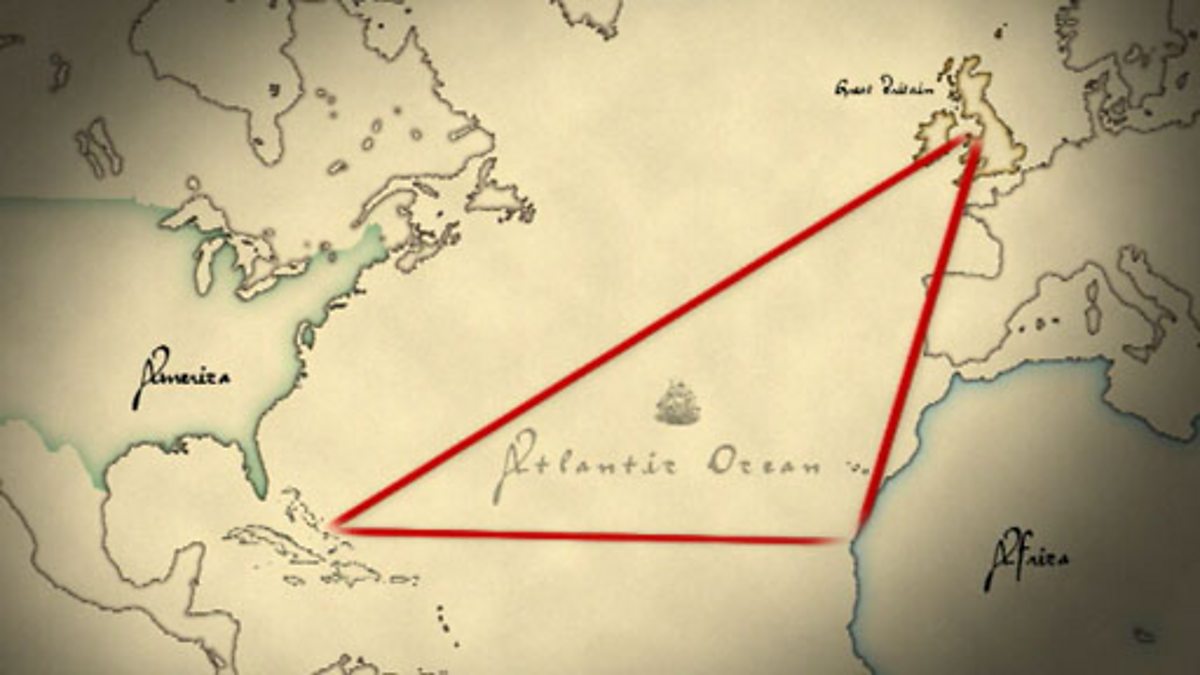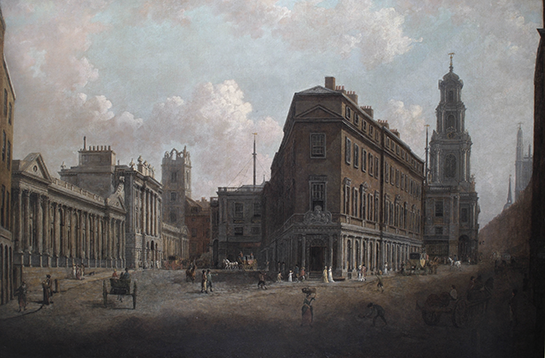What can we learn about world history by studying human relationships with nature? Discuss
using historical examples or a case study from c.1500-1800.
Primary Source: “Portrait of a man said to be Christopher Columbus” – Sebastiano del Piombo (Sebastiano Luciani) – https://www.metmuseum.org/art/collection/search/437645
The impact natural resources had on our society is immense, we can learn from our past that successful and unsuccessful agriculture has shaped our society, and globalisation of trade and the increase of natural commodities has shaped the modern era. Although globalisation allowed for more economic growth through globalisation of trade, the spread of disease due to globalisation is the negative effect it has, resulting in pandemics and spread of infection diseases, which killed millions of people from as early as 1347 through trade between Europe and China and the spread of the bubonic plague, or to a later date the spread of the devastating smallpox amongst other diseases to the new world. Negative impacts also shaped our society, the French revolution was a result of food shortages due to the little ice age which was a period of cooler temperatures and resulted in poor harvests. Through this we can understand that natural resources were a crucial commodity in the expansion of society and empires yet also caused devastation on a large scale.
Trade and natural commodities have been intrinsic to economic and societal growth since the silk road, one of the most important trade routes in history which collapsed during the 15th century. This is equally as substantial in the English colonisation period in the Caribbean and New America. Colonisation led to broader trade especially due to the foundation of the triangular trade network in the 1500’s which involved England, Africa, and the Americas. Far from coincidentally, after the expansion of the English empire, one of the most detrimental periods in humanities political and societal development would appear, the Industrial revolution which would begin in 1740 after substantial economic growth due to colonisation and trade. The little ice age was a substantial impact during this period as it was a prolonged period of cooler temperatures which is thought to be due to volcanic ash after eruptions in Iceland. The lack of food resources led to widespread famine, and particularly in France instigated change to their primitive and dysfunctional social, political and economic structure.
These factors show how impactful natural commodities are in global advancement. Colonisation and exploitation of African slaves produced increases in English imports and exports where “Ships carried sugar, tobacco, rice and other staple produce” (Morgan, K. 2007. P.54) between the Caribbean and the New World. The trade triangle consisted of raw goods being transported to England which then produced these raw goods into textiles in exchange for slaves in Africa, this was fundamental for English advancement and instigated the industrial revolution which was begin in 1740, one of the most pivotal moments in societal development resulting in higher output of goods due to the introduction of steam machinery instead of hand made products. Poor weather, management of crops and poor trade routes have also changed global conditions. France is the perfect example of poor harvests influencing society as the start of the French revolution was instigated due to famine, and the dysfunctional feudal system and Ancien regime. This lack of resources led to mass bread riots and as a result over the course of the revolution, changed the Ancien regime and ended the feudal system. Through this we can acknowledge natures impact on food commodities and their impact on development in society and it’s progression.
The first industrial revolution took place in England in the 1740’s as a replacement of handmade produced to mass produced goods in factories. The invention of these machines would result in a far higher output of textile goods. This revolution is considered as one of the most pivotal moments in progressive humanity and its society, this was because of colonisation and ultimately imports of raw goods from colonising countries and the economic gain produced by these imports. This can be shown through economics as “trade statistics for the three years 1697-1701 has suggested that more than 80 per cent of English domestic imports were manufactured goods” (Hartwell, R.M. pg.84) which were largely imports from English colonisations as “more than 70% of retained imports were food stuffs and raw materials” (Harwell, R.M. pg.84) these materials were mostly imported from the Caribbean and America’s The industrial revolution resulted in economic growth, mass production of goods and would later impact globally as further industrial revolutions in other countries would develop. The triangular trade and colonisation of the America’s and Caribbean show as an example of drastic change due to imports, exports and the expansion of economic growth in England. The spice trade in the Indies and the prior silk road trade routes also show this, but as a precursor to the colonisation and the early modern trade route, the triangular trade.
The triangular trade network was the shipment of commodities between Africa, England, and the New World and relied on the slave trade. The America’s produced raw goods, England created textiles and would be traded with Africa for slave shipments to the America’s. The slave trade started in 1619 and would gain large traction until it’s emancipation in 1863, yet would see as many “slave imports into the New World amounted to 9,566,100 persons from the inception of the trade in the fifteenth century to its end around 1870” (Findlay, R. pg.20). Trade introduced disease to colonies, smallpox was the most devastating of these diseases as it is one of the most dangerous diseases to plague mankind. During the 1700’s and 1800’s a population of 28,000 Indians were infected with smallpox and only 9,000 lived, smallpox later became a global pandemic killing 300 million people since the 1900’s being one of the deadliest pandemics in world history.
To understand the devastation globalisation of disease in English and Spanish colonies, it’s best to understand the global scheme of some of history’s most devastating diseases. Smallpox was one of the “major scourges of mankind during the eighteenth to the twentieth centuries” (Carmichael, A.G. and Silverstein, A.M., 1987. Pg. 149), the disease had a 20-30% rate of mortality and over the course of the 20th century amassed 300 million fatalities. Smallpox was recognised in China as early as 1122 BC in China and recognised as early as the 5th and 6th centuries in Europe. Although the disease was present as early as these dates, according to Carmichael there were “only sporadic incursions of the deadly disease during the fifteenth and sixteenth centuries and that the virulent virus attained dominance throughout Europe during the seventeenth century” (Carmichael, A.G. and Silverstein, A.M., 1987. Pg.148). Throughout history disease has been spread by globalisation, this is also present in modern history as travel and trade spread diseases such as covid-19.
Smallpox was devastating to Indian populations after English colonisation, prior to English settlement the “absence of diseases was also noticed by the early settlers” (Duffy, John, J.D. Pg. 324). Smallpox wasn’t the only disease introduced to the English colonies, “malaria, yellow fever, typhoid, typhus and the venereal disease were among those introduced from the old world” (Duffy, John, J.D. pg.325). The English had been impacted by these diseases for centuries and had developed an immune response to these diseases. Due to the native Indian’s lack of experience with disease, they were impacted far worse than the English population which the English notably considered a positive situation for the English settlers and colonisation as “the extirpation of the Indians was far more the result of man’s disease than his weapons” (Duffy, John, J.D, 1951. Pg.324) helping in English conquest. Smallpox helped the English conquest and “disease played a part in all the colonial wars” (Duffy, John, J.D. pg.327).
We can see the devastation of disease as a natural cause through smallpox in both old and new world. The bubonic plague is the perfect example as a correlation as it was transported on trading vessels between China and Sicilian ports. The bubonic plague arrived in Sicily in the 1340’s and would amass an estimated 25 million deaths, equal to one third of the European population. This correlation shows that although expansion of empires through colonisation and trade were pivotal in societal growth, the spread of disease such as smallpox and the bubonic plague was a biproduct and created our first pandemics which repeat in history.
Nature and famine due to both poor climate and poor trade networks have resulted in deaths since the start of society. Between the 14th and 19th century there was a recurrence of poor weather which blanketed North America and much of Europe, which has been referred as the Little Ice Age. Although impacted throughout this period, it’s most brutal period was between “1680 and 1730 the coldest cycle of the little ice age” (Fagan, B. p.7). Poor agriculture harvests led to riots in France, particularly the ‘March to Versailles’ which is one of the earliest drivers for the French Revolution.
The French revolution is a typical example of poor management of resources, excessive tax, and an example of the flaws in the feudal system and Ancien regime. William Doyle explains by categorising the French revolution into four revolutions, the fourth revolution being the “peasant revolution” (Doyle, W. Pg.7). The peasant revolution was “fired by panic fears for the safety and ripening crops” (Doyle, W. Pg.7), effectively starvation amongst the peasants, whilst the aristocracy claimed tithes. The feudal system, heavy taxes amongst peasants and the ongoing agricultural issues due to the little ice age during the latter 1700’s led to bread riots and eventually the ‘March to Versailles’, which was a protest led by women, being one of the first protests which would instigate the French revolution.
Although the starvation and terrible agricultural issues due to poor harvest and poor transport of goods was terrible for the French population, these issues also arise change. The French revolution would see feudalism end, disbandment of monarchy and establishment of civil laws. These outcomes show that agricultural and natural issues can result in change in society. The Ancien Regime, consisting of three estates; the clergy, nobility and commoner’s was fundamentally flawed and continued to tax the poor for the betterment of the clergy and nobility. The starvation present in the later 1700’s amongst the peasants as an instigation for the French revolution exemplifies the large change that can arise due to the little ice age, resulting in poor agriculture natural harvests.
The examples above show the various ways in which our natural environment has impacted us globally. Whether this be through trade of natural commodities and its impact on economic growth and later important events such as the industrial revolution, which shaped early modern society, or agricultural issues such as the little ice age. We can acknowledge that natural commodities, textiles or food resources, have dictated the progression of our society as a whole. We can learn that in our future, the depreciation of natural resources due to over-population, mass deforestation, fossil fuels and starvation will result in change, much like the growing population during the colonisation periods. The transmission of disease is yet another reoccurring issue, the transmission of the bubonic plague on trade routes between China and Sicily in the late 1340’s alongside the introduction and devastation of smallpox in English and Spanish colonies during the 18th century shows a direct correlation with covid-19 and its transmission through trade and travel. Therefore, this show’s that these issues we have had in our past, reoccur in present times and food resources will also dictate our future due to overpopulation and starvation in many third world countries.
Bibliography
Morgan, K. (2007). Slavery and the British Empire: From Africa to America. [online] Google Books. OUP Oxford. Available at: https://books.google.com.au/books?hl=en&lr=&id=u6IUDAAAQBAJ&oi=fnd&pg=PR9&dq=trade+triangle+slavery+scholarly+articles&ots=yBYmYrGUKF&sig=MeO_SeV5KBMSoZ2A9a2gozOEQoI#v=onepage&q=trade%20triangle%20slavery%20scholarly%20articles&f=false [Accessed 27 Jan. 2023].
Findlay, R. (1990). The” triangular trade” and the Atlantic economy of the eighteenth century: a simple general-equilibrium model. Princeton, NJ, USA: International Finance Section, Department of Economics, Princeton University. Available at: https://ies.princeton.edu/pdf/E177.pdf [Accessed 14 Feb. 2023]
Rönnbäck, K. (2018). On the economic importance of the slave plantation complex to the British economy during the eighteenth century: A value-added approach. Journal of Global History, 13(3), 309-327. doi:10.1017/S1740022818000177 Available at: https://www.cambridge.org/core/services/aop-cambridge-core/content/view/DBB1225FF928C09689B3EEFCA8F66C55/S1740022818000177a.pdf/on-the-economic-importance-of-the-slave-plantation-complex-to-the-british-economy-during-the-eighteenth-century-a-value-added-approach.pdf [Accessed 14th Feb. 2023]
Duffy, John, J.D, (1951), ‘Smallpox and the Indians in American colonies’, Vol. 25, No.4, pp. 324-341. Available at: https://www-jstor-org.libraryproxy.griffith.edu.au/stable/pdf/44443622.pdf?refreqid=excelsior%3A872abd50d7e128bc5e624403ac214124&ab_segments=&origin=&acceptTC=1 (Accessed: 30/01/2023)
Cook, N.D. (1998). Born to Die: Disease and New World Conquest, 1492-1650. [online] Google Books. Cambridge University Press. Available at: https://books.google.com.au/books?hl=en&lr=&id=dvjNyZTFrS4C&oi=fnd&pg=PR9&dq=disease+in+the+new+world+&ots=47znNm7v6d&sig=p_37tmdKN5WoNsuQHO3-BeXBOEI#v=onepage&q=disease%20in%20the%20new%20world&f=false [Accessed 5 Feb. 2023].
Carmichael, A.G. and Silverstein, A.M., 1987. Smallpox in Europe before the seventeenth century: virulent killer or benign disease?. Journal of the History of Medicine and Allied Sciences, 42(2), pp.147-168. Available at: https://www.researchgate.net/profile/Arthur-Silverstein/publication/19861340_Smallpox_in_Europe_before_the_Seventeenth_Century_Virulent_Killer_or_Benign_Disease/links/5fbea947299bf104cf7987f1/Smallpox-in-Europe-before-the-Seventeenth-Century-Virulent-Killer-or-Benign-Disease.pdf [Accessed 12 Feb. 2023]
Fagan, B. (2019). The Little Ice Age: How Climate Made History 1300-1850. [online] Google Books. Basic Books. Available at: https://books.google.com.au/books?hl=en&lr=&id=hZuZDwAAQBAJ&oi=fnd&pg=PT10&dq=little+ice+age+scholarly+articles&ots=Z4_6-GukVN&sig=ZiBi0nl1RkfnJllVS3KK5KvqqNc#v=onepage&q=little%20ice%20age%20scholarly%20articles&f=false [Accessed 31 Jan. 2023].
Doyle, W. (1999). Origins of the French Revolution. [online] Google Books. OUP Oxford. Available at: https://books.google.com.au/books?hl=en&lr=&id=OABREAAAQBAJ&oi=fnd&pg=PP3&dq=french+revolution+scholarly+articles&ots=tn50jzV7Jv&sig=8R6PYGUBp7tpb3SA0DwPBo0Z-MU#v=onepage&q=french%20revolution%20scholarly%20articles&f=false [Accessed 13 Feb. 2023].
Hartwell, R.M. (2017). The Causes of the Industrial Revolution in England. [online] Google Books. Routledge. Available at: https://books.google.com.au/books?hl=en&lr=&id=ckMiEAAAQBAJ&oi=fnd&pg=PP1&dq=causes+of+british+industrial+revolution+scholarly+articles&ots=e1AA962yoL&sig=odq4Ywjf_d_DwFwBOJKmZWL-_-o#v=onepage&q=causes%20of%20british%20industrial%20revolution%20scholarly%20articles&f=false [Accessed 16 Feb. 2023].



